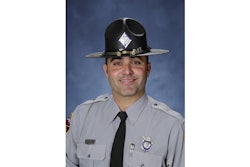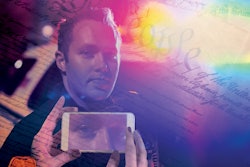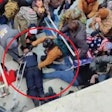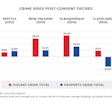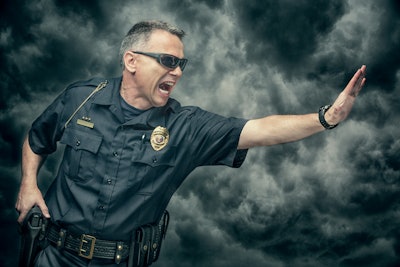 Is the law on use of force really changing? What is science saying about bias? What can you do to be safer on the job?Photo: Getty Images
Is the law on use of force really changing? What is science saying about bias? What can you do to be safer on the job?Photo: Getty Images
This is the final article in my series on how law enforcement tactics and training have evolved and where police tactics and training are going. And I want to use this space to revisit a topic I addressed in the second article back in June, California's new law enforcement use-of-force law.
When I first addressed the California legislation earlier this year, it appeared that the impending law was going to be detrimental to officer safety and increase officer liability in use-of-force incidents. But the final legislation that was signed into law by Governor Gavin Newsom in August was very different than the original legislation and much more in line with federal law enforcement use-of-force law as established by the Supreme Court.
The credit for the revision of the proposed law to make it less onerous for law enforcement goes to many California police and sheriff's agencies, officer/deputy organizations, management organizations, and prominent police defense attorneys. But the same anti-police activists who think there is no such thing as a legitimate use of force will be back to chip away and try again to put officers in grave jeopardy or in jail. As the saying goes, "Just because you're paranoid doesn't mean they're not out to get you."
Whether you work in California or not, I recommend that you take a close look at Assembly Bill 392, which takes effect on January 1, 2020. Online you can just put California Assembly Bill 392 in your search engine (and be sure to view the version signed by the governor).
Analyzing the Law
Missy O'Linn is a prominent Los Angeles-based police use-of-force defense attorney with Manning & Kass, Ellrod, Ramirez, Trester LLP. O'Linn, who also served as a police officer and tactics trainer, has thoroughly analyzed AB 392. Here is her interpretation of the new law.
"This amendment is being sensationalized and mischaracterized by some politicians, national media, plaintiffs' attorneys, and anti-law enforcement activists as a major re-writing of the law on use of force. While the changes will undoubtedly result in years, if not decades, of additional litigation, in my opinion that is simply not the case. The plus side is that the language as amended makes it clear that the concern is for 'sanctity of every human life' and thus this could be construed as a positive for law enforcement because it clarifies that officers, civilians, and suspects' lives are all part of the issue. In fact, that concept has always been true for law enforcement and, as stated, counters the commonly used tactic, which omitted the 'every' human life provision."
Related: Videos Featuring Attorney Missy O'Linn
The new California law also addresses de-escalation and other tactics. O'Linn writes: "'Other available options' is a question that we have been dealing with for over a decade. What needs to be made clear is that the time available and opportunities to consider, transition, and utilize other resources, techniques, risks, force options, and quantum of force may arguably preclude officers from finding the optimal solution to a force event. Thus, the requirement is for officers to find a reasonable way to do everything—not the best way to do anything."
One new section in the law states, "A peace officer shall not use deadly force against a person based on the danger that person poses to themselves, if an objectively reasonable officer would believe the person does not pose an imminent threat of death or serious bodily injury to the peace officer or to another person." O'Linn writes, "This section generally deals with responding to people threatening suicide and suicide-by-cop issues. I do not believe that this significantly changes the standard of care or the current law on use of force. This section will likely be used to reinforce the discussion in many circles currently about walking away from suicidal subjects who are only an imminent threat to themselves and avoiding lethal-force encounters that may result from trying to save those individuals from themselves."
There is much more to the law, and it is worth reading. But fortunately, before the governor signed it, the legislation that was once severely slanted against the police was modified to become, well, more reasonable.
In addition, legislation to provide $10 million to enhance police training in California has also been signed by the governor. The training will include coursework on use-of-force review and analysis, cultural competency, reporting requirements, and how to deescalate situations involving persons with mental illness. You can see the details by looking up California Senate Bill 230.
Let's move on from the California laws to some other current use-of-force issues
Racial Disparity Studies
How police respond to incidents involving people from minority racial and ethnic backgrounds is a subject usually fraught with emotion, and most studies of such incidents are not very scientific. Earlier this year, two studies supporting police were published. The latest appeared in the Proceedings of the National Academy of Sciences (PNAS), a peer-reviewed scientific journal.
Reporting the significance of the study titled, "Officer characteristics and racial disparities in fatal officer-involved shootings," the authors wrote:
"…Existing databases of fatal shootings lack information about officers, and post-analytic approaches have made it difficult to assess the contribution of factors like crime. [The authors created a comprehensive database of fatal shootings and predicted victim race.] We find no evidence of anti-Black or anti-Hispanic disparities across shootings, and White officers are not more likely to shoot minority civilians than non-White officers. Instead, race-specific crime strongly predicts civilian race."
The general media, of course, tends to ignore such evidence. For example, the Los Angeles Times wrote not one word about the above study, but a couple of weeks later featured a prominent article about a different study that was also published in the PNAS. The Times' headline was subtle: "Getting killed by police is a leading cause of death for young black men in America."
In mid-September, noted Manhattan Institute scholar Heather Mac Donald testified before the House Judiciary Committee, and she took on the usual false media narrative about the problem. "Policing today is more professional and restrained than at any time in its history. And there is no government agency more dedicated to the proposition that black lives matter than the police," she told the Committee. You can watch or read her testimony at https://manhattan.institute/article/testimony-before-the-house-judiciary-committee.
Wouldn't it be nice if parents—regardless of race—taught their children that if confronted by the police, remain calm, don't run, don't resist, don't attack, and don't make moves consistent with being armed? "Look, Ma! No use of force!"
Some Tactical Briefs
This article series has been mainly about The Big Four: Policy, Training, Equipment, Tactics. Briefly, here are some tactics issues that continue to need attention and should be passed on to our younger and future officers:
• The Ten Deadly Errors Still Kill Police. In 1974, famed and retired LAPD detective Pierce Brooks wrote the book, "Officer Down, Code Three." My advice to working officers is: Get it. Read it. Live it.
• Don't Bring a TASER to a Gunfight. The TASER has proven to be very useful in a variety of situations. But a suspect armed with a gun is not one of them, and when getting ready to use the TASER on a suspect standing you off with a knife or other blunt instrument, have a designated lethal cover officer at the ready.
• Carotid/LVNR Restraint. You can end a lot of fights early if you use these techniques properly. If your policy does not allow these proven tactics, ask your higher-ups to read the medical literature and reconsider. Many injuries will be prevented. I speak from much experience on this subject. When the political establishment forced LAPD to stop using the carotid control hold, injuries to officers increased 521%, and injuries to suspects increased 661%. These shocking numbers (and even the Rodney King incident and resulting deadly riots) did not cause the politicians to change their minds.
• De-Escalation is a Two-Way Street. De-escalation relies on being able to communicate with the subject. It also relies on not rushing into the situation if someone's life is not in imminent jeopardy. Trainer L. Konrath says, "Life is not one giant exigent circumstance. More often than not, we have the time to consciously decide how we will choose to respond in a given situation as opposed to merely reacting to our well-learned, much appreciated training.
• Send a Multi-Unit Response to All Domestic Violence Calls. Too many officers have been lost when they went alone to such calls.
• Carry Off Duty. How many active-shooter situations and other violent crimes in progress could be mitigated when the good guy with the gun (especially a trained officer like you) is prepared to intervene and stop the killer?
• Body-Worn Cameras and Other Video Evidence. These are valuable to investigations, and can save your rear end when there is an unfounded allegation of misconduct. But camera footage has many limitations. Learn about these limitations and understand them. The best comment I ever heard about the subject came from LAPD Director of Constitutional Policing and Policy Arif Alikhan: "Body-worn camera videos are like watching a baseball game through a straw. But it's all the public sees."
• Armed Suspects Initiate Attacks Faster Than You Can React. Understand the reactionary gap. Try to keep distance and cover on your side. It buys you time.
• To Pursue or Not Pursue. In a pursuit, think constantly about risk management. Make sure the pursuit is really worth the risk. Are you chasing a stop-sign runner or a bank robber?
• Seat Belts. If you don't wear 'em, I hope you're still alive after the collision or single patrol vehicle accident. But odds are you won't be, especially if you get thrown through the windshield.
• Get Up to Date on the Badly Named "21-foot Rule." It's not a rule. It never was. But learning and appreciating the reactionary-gap implications can save your life. For the latest, take a look at https://www.forcescience.org and put "21-foot" in the search function.
• Tactical Training Must be Realistic, Challenging, and Heart-Thumping. Retired Los Angeles Sheriff's Department Commander Sid Heal says, "Training is an investment, not an expense. Training is always proactive."
I hope this series of articles has been thought-provoking. It's all about improving your safety as you do your best to protect and serve the public and your partners.
I welcome any thoughts for further discussion by email at gregmeyer@earthlink.net.
Greg Meyer is a retired Los Angeles Police Department captain, a nationally recognized use-of-force expert, and a member of the POLICE Advisory Board since 1997.
RELATED:
Related: Tactics and Training: Legal Grounds for Using Force
Related: Tactics and Training: How Do We Reach the Next Level?






